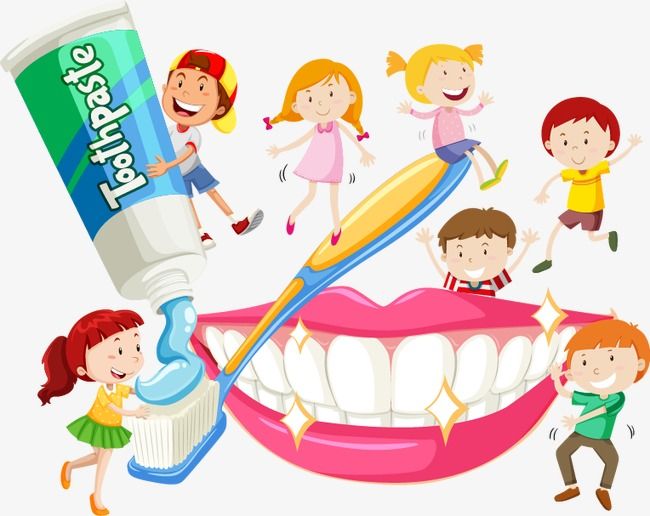As parents, we would like to start our kids young when it comes to their oral hygiene. But at the same time, you are probably uncertain about the appropriate size of the toothbrush. Then, you also ask yourself how much toothpaste they must use at a given age. The never-ending questions parents must face each day.
Fret no more dear parents. As we all know, every child’s progress is different. The same may apply to their oral growth. So let us help you select the best oral care partner for your child’s unique oral development through this guide.
You can consider several options for your baby and toddlers aged between 1 to 2 years old. Still, pediatric dentists recommend the use of a silicone finger slip toothbrush. This has tiny silicone bristles that are great to clean the tongue and gums for milk or food build-up. Besides, this is a more efficient choice than using a damp washcloth on the toddler’s tongue and gums.
The silicone finger slip toothbrush is easy to use. But first, keep in mind to always sanitize it before and after use. Once sterilized, slip your pointer finger inside the toothbrush. Some of these toothbrushes have storage for safekeeping. They make keeping it in clean storage easy peasy.
Also, pediatric dentists tell us to brush after every feeding. This eliminates bacterial growth while your child’s milk teeth are developing during this stage.
When your child hits his 2nd year, you can introduce toddler toothbrushes. If you compare it with a regular adult toothbrush, it has a larger bristle head. This allows it to reach the back molar and other hard-to-reach areas.
Now you are wondering when you can start using toothpaste. Well, toothpaste is only required when the child’s first tooth appears. Only use a rice-size amount as soon as the first tooth emerges. When your child blows out 3 candles on his birthday, use a pea-sized amount. It is advisable to start off with a toddler toothpaste that doesn’t contain fluoride. That is because they will swallow the toothpaste. This is also why you want to keep it safe and go fluoride-free. When your child can spit it out, you may introduce fluoride toothpaste.
Once your child is at the age of 3 to 5 years, they are ready for a kiddie toothbrush. Most children have their 20 baby teeth by the time they are three. These kiddle toothbrushes are the smaller versions of the adult ones. That way, children can easily handle them.
Also, soft bristles are recommended during this stage. This is because they are gentler on the gums. Most importantly, they can still get the job done while the kids practice brushing their teeth. Let your child hold his toothbrush. This makes him feel that he is part of the action. Encourage your child to floss regularly since most of his teeth are touching each other by this stage. An adult should still supervise until the child is 8 years old.
By the time your child is at the age of 6-9 years, they may know the importance of brushing. However, they may need more motivation to brush their teeth twice a day. To keep them motivated, introduce electric toothbrushes with colorful lights. They might also be more motivated to their favorite cartoon characters on it. Sticking to manual toothbrushes can also be an option. There are also fun designs and cartoon characters that can keep the child interested in his brushing routine.
As established, keeping the child motivated to brush may start to be challenging. Another parenting tip that you can use is to model the correct oral care to your children. Personally, this is how I pique my sons’ interest in oral hygiene. I show them how I brush and floss my teeth regularly. So turn that nightly brushing routine into another fun time you can spend with your child. Show them how it is done.
You can still intervene between ages 6-8 to ensure that they get most of the food particles and cavities out. By the time they celebrate their 9th birthday, they may do it independently. Adult supervision is still required. Overall, this ensures that they do it properly and build a good routine. The goal is consistency in maintaining their brushing routines.
This is also the stage where they start losing their baby teeth. After that, their permanent and adult teeth begin to come through. Hence, it is more essential to keep their gums and teeth clean. As young children, they are susceptible to tooth decay. Give your child a gentle reminder to brush longer, not harder. Hard brushing may lead to gum sensitivity. It may also damage the tooth enamel. Hence, follow the dentists’ advice. Dentists will always suggest brushing our teeth twice a day for two minutes.
Let us talk about toothpaste for a bit here. It is recommended to use a pea-size toothpaste between 1350ppm and 1500ppm fluoride, concentration but no less than 1000ppm. Fluoride concentration must be between these ranges to achieve maximum benefits. Of course, let your children drink water with fluoride to get these benefits.
When your child is 10 years and older, they can start using the adult toothbrush. This is the time when a child’s mouth is large enough to fit an adult toothbrush. Apart from the toothbrush and fluoride toothpaste, and regular flossing, they can rinse with a mouthwash. Get your child an electric toothbrush if plaque builds on his teeth and if his teeth have stains.
Essentially, oral hygiene should be introduced to your child during their formative years. Using the appropriate toothbrush size and toothpaste helps you build this daily brushing routine. Moreover, using a suitable toothbrush also makes sure that oral health is maintained. I hope that you, as the parent, can conquer the development your child goes through with this guide.

